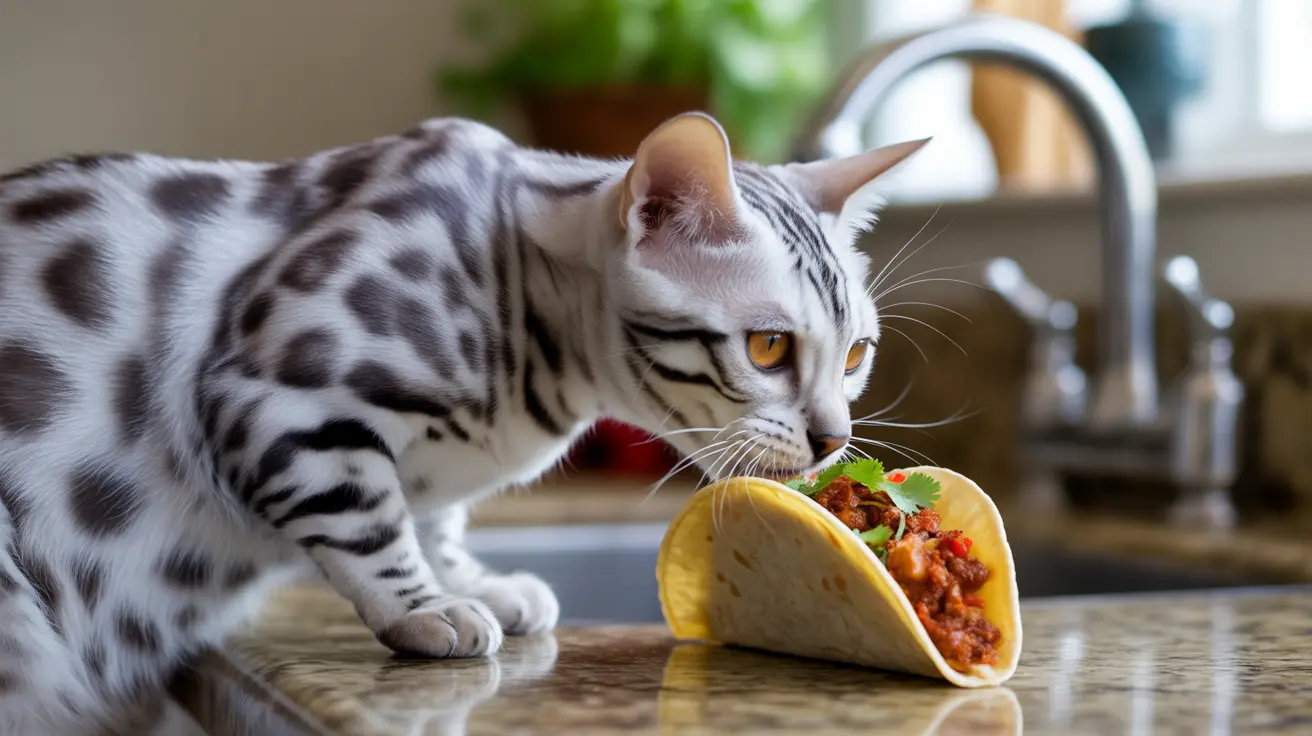Have you ever wondered about your cat's reaction to spicy food? While cats might show curiosity about your spicy meal, their experience of these flavors is fundamentally different from ours. Understanding how cats perceive spicy sensations is crucial for every pet owner, especially when it comes to keeping our feline friends safe and healthy.
As obligate carnivores with unique taste biology, cats process spicy foods quite differently from humans. Let's explore the fascinating world of feline taste perception and discover why spicy foods should never be part of your cat's diet.
The Unique World of Feline Taste Buds
Cats have a remarkably different taste system compared to humans. While we boast approximately 9,000 taste buds, cats have only about 470. This significant difference affects how they experience various flavors, including spicy ones.
Unlike humans, cats lack the ability to taste sweetness entirely, as they're missing the gene responsible for sweet taste receptors. Their taste buds are primarily focused on detecting salty, sour, bitter, and umami (meaty) flavors – an evolutionary adaptation that aligns with their carnivorous nature.
How Cats Experience Spicy Sensations
Interestingly, spiciness isn't actually a taste – it's a pain response. Cats, like humans, have TRPV1 receptors that detect capsaicin, the compound responsible for the "heat" in spicy foods. When these receptors are activated, they trigger a burning sensation.
While cats can definitely feel the heat from spicy foods, they experience it as discomfort rather than the complex flavor profile that humans enjoy. This sensation can be particularly intense for cats due to their sensitive digestive systems.
Health Risks of Spicy Foods for Cats
Feeding cats spicy food can lead to several health issues, including:
- Immediate oral discomfort and excessive drooling
- Gastric distress and vomiting
- Diarrhea and digestive upset
- Potential allergic reactions
- Long-term digestive complications
Additionally, many spicy foods contain ingredients like onions and garlic, which are toxic to cats and can cause serious health problems, including damage to their red blood cells.
Safe Feeding Practices for Cats
Instead of experimenting with spicy foods, focus on providing your cat with appropriate nutrition through:
- High-quality commercial cat food
- Plain, cooked meat without seasonings
- Veterinarian-approved cat treats
- Fresh, clean water always available
Remember that cats thrive on consistency in their diet, and their nutritional needs are best met through foods specifically formulated for felines.
Frequently Asked Questions
Can cats actually taste spicy foods or just feel the heat?
Cats don't taste spiciness as a flavor but rather feel the burning sensation through their TRPV1 receptors. They experience it as a form of pain or irritation rather than a taste.
Why is spicy food harmful to cats, and what symptoms should I watch for if my cat eats some?
Spicy food can cause immediate discomfort, drooling, vomiting, and diarrhea in cats. Watch for signs of distress, excessive thirst, or changes in behavior. If symptoms persist, contact your veterinarian.
How do cats' taste buds differ from humans', especially regarding spicy and sweet flavors?
Cats have only about 470 taste buds compared to humans' 9,000. They can't taste sweetness at all and process spicy sensations differently through pain receptors rather than taste buds.
What ingredients in spicy foods are toxic to cats besides just the heat?
Common ingredients in spicy foods like onions, garlic, and certain spices can be toxic to cats. These can cause anemia, damage to red blood cells, and severe digestive issues.
What should I do if my cat accidentally consumes spicy or seasoned food?
Monitor your cat closely for adverse reactions. Provide fresh water and contact your veterinarian if you notice concerning symptoms like persistent vomiting, diarrhea, or lethargy.
Remember, while cats might show curiosity about your spicy food, it's best to keep such items safely out of their reach and stick to cat-appropriate foods that support their health and well-being.






